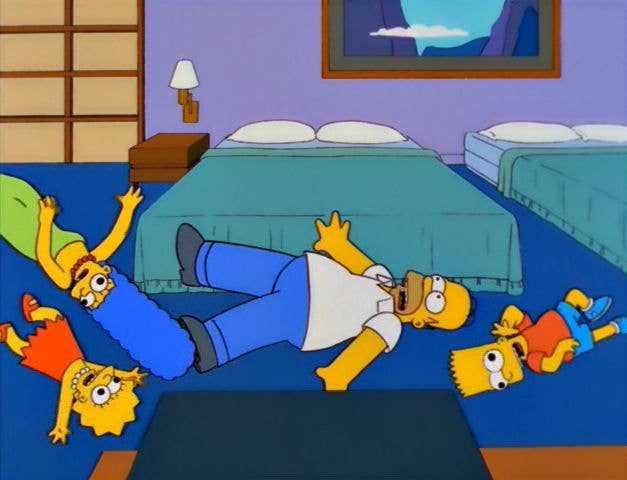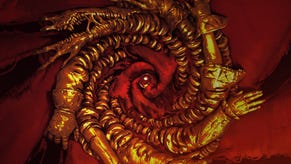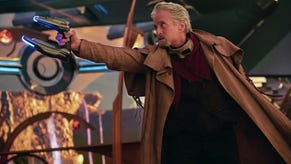Why the Pokemon Anime is the Most Successful Adaptation of a Videogame Ever
Game Freak's marketing juggernaut owes much of its success to its television spinoff. And it's still going.
This article first appeared on USgamer, a partner publication of VG247. Some content, such as this article, has been migrated to VG247 for posterity after USgamer's closure - but it has not been edited or further vetted by the VG247 team.
My first brush with Pokémon came when I watched an episode of the anime at the behest of my friend. It had been airing for a month or two at that point, having been timed to coincide with Pokémon Red and Blue's rollout here in the U.S.
"Oh, that's kind of cute," I said to myself as I watched Ash Ketchum agonize over his decision to trade his Butterfree for a Raticate. I made a mental note to ask for the game for Christmas. A few months later, I was full-blown maniac for the series.
I wasn't alone, either. Millions of kids (and more than a few self-conscious teens) got their start on the series through the anime - easily the most successful example of spinoff media in gaming history. Street Fighter, The Legend of Zelda, and Final Fantasy have all had alternately hilarious and disastrous turns in the cinema and elsewhere, but the Pokémon anime remains an integral part of the franchise's identity. If you imagine a Charmander saying its name in its high-pitched squeak, then you're thinking of the anime.
And it's still going. Nearly 20 years after its debut on Japanese television, OLM, Inc. is still producing episodes and movies that are being translated and aired worldwide. The show has entered the kind of rarefied air occupied by a select few animated shows, including The Simpsons and The Flintstones.
Over the years, it has proven a brilliant and rather devious marketing vehicle for the games that have served as its inspiration. Its main goal is to promote both the new games and a handful of monsters, which are then turned into plush toys, figures, and other merchandise. Discussing this over breakfast this morning, my partner observed that even a Pokémon's habit of repeating its name is a smart marketing tactic - it basically drills that monster's name and image into your head forever (Pika Pika).
But its sheer marketability doesn't account for its sustained worldwide popularity. Lots of cartoons have been conceived with the intention of selling this brand or that brand and ultimately faded away. The Pokémon anime grabbed kids in a way that few other shows had to that point; and for a time, it was a bonafide international sensation. Certainly, the popularity of the games had something to do with it, but the show also appealed to kids on its own merits. Here's one reason: It was serialized.

As it was originally conceived, the show was meant to parallel the game. Ash (Satoshi in the Japanese version, named for the franchise's creator, Satoshi Tajiri) receives his first monster, slowly but surely earns gym badges, battles a pair of villains trying to steal his Pikachu, and constantly finds himself one step behind his rival, Gary (Shigeru). Many of the episodes are meant to stand alone, but Ash nevertheless undergoes a distinct arc over the course of the series as he meets new friends, learns to temper his natural impatience and brashness, and becomes a skilled trainer. In the end, he enters a grand tournament and ends up fighting... himself.
In one of the final rounds, Ash encounters a trainer named Richie who is basically his doppelganger, even down to the fact that they wear similar clothing. Ash ends up losing because he sends out his Charizard, which fails to obey him and gets him disqualified. It's a surprisingly bittersweet ending for a kid's show - particularly one as upbeat as Pokémon. The reasoning for this decision becomes clear soon enough, though: Ash's journey isn't over. He still has another 800 or more (!) episodes worth of adventures.
In any case, kids loved following Ash's adventures from week to week, excitedly rooting for him to get that next badge and wondering what awaited him at the end of the road. It could be funny, as when Ash chased a Primeape and ended up getting the living bejeezus kicked out of him. It could be exciting, with battles that had little to do with the game - at one point, Ash uses a water sprinkler to wet down an Onix so Pikachu can shock it - but were usually well-edited and dramatic. And it could be heartfelt, as when Ash bid goodbye to his Butterfree. It was also inspirational in its own way. Pokémon set out to teach kids the meaning of fair play, good sportsmanship, and perseverance. Whenever Ash got knocked down, he would pick himself up again, dust himself off, and keep doggedly pursuing his goals. I'll admit, it was a guilty pleasure of mine for a long time.

The show eventually proved so popular that it actually influenced the games. In 1998, Game Freak released Pokémon Yellow in Japan - a special edition featuring Pikachu that was a direct nod to the anime. Jesse and James - the show's bumbling villains - also made an appearance with Koffing and Ekans. Years later, Pikachu would be the only monster in the game to say its own name as a battlecry. Though the anime has mostly existed at the service of the games since then, Pokémon Yellow served to highlight their symbiotic relationship. The popularity of one fueled the other.
Of course, as with all toy-driven shows, capitalism is still king in Pokémon. The franchise's ongoing success has ensured that the series will never reach a satisfactory conclusion. Every few years, OLM hits the resets button and sends Ash to a new region with his Pikachu in tow and the cycle begins anew. Ash is pretty much doomed to wander the earth - ageless and unable to ever get past the final eight of a tournament.
Amusingly, despite having been rebooted many times over, the anime has retained some degree of continuity over the years. Ash's old monsters hang out at Professor Oak's ranch, and they are called upon when he's either about to embark on a major battle or there's a remake to promote. Specials have occasionally appeared highlighting the whereabouts of old companions like Misty. Ash himself, though, will remain 10-years-old forever. It's best not to think about it too much.
(Another thing that's best not to think about: the shipping culture that has grown up around characters like Misty and May. Just... ew.)
As with the rest of the series, the anime's stubborn refused to change may eventually prove its undoing. Over in Japan, Level-5 has become equally adept at spinning its games off into kid's shows, and the Yo-Kai Watch anime has been reportedly eating Pokémon's lunch for a few years now. In the U.S., the anime still enjoys a certain amount of cultural cachet, but more as a nostalgia trip than an actual relevant property. You can find the shows and movies on Netflix, Cartoon Network, and elsewhere, but none of it is even close to being as big as Pokémon: The First Movie: Mewtwo Strikes Back, which grossed some $160 million in the international box office.
Still, the anime trudges stubbornly onward. With Sun and Moon, Ash will find himself in a new region with a new collection of monsters, ready to win over a new generation of kids. It's not as popular as it once was, but it remains etched in pop culture, defying the notion that videogames can't work as TV shows or movies. And when we think of the original 151 monsters, we'll think of Ash Ketchum wandering the world in his quest to be a master, forever young.










